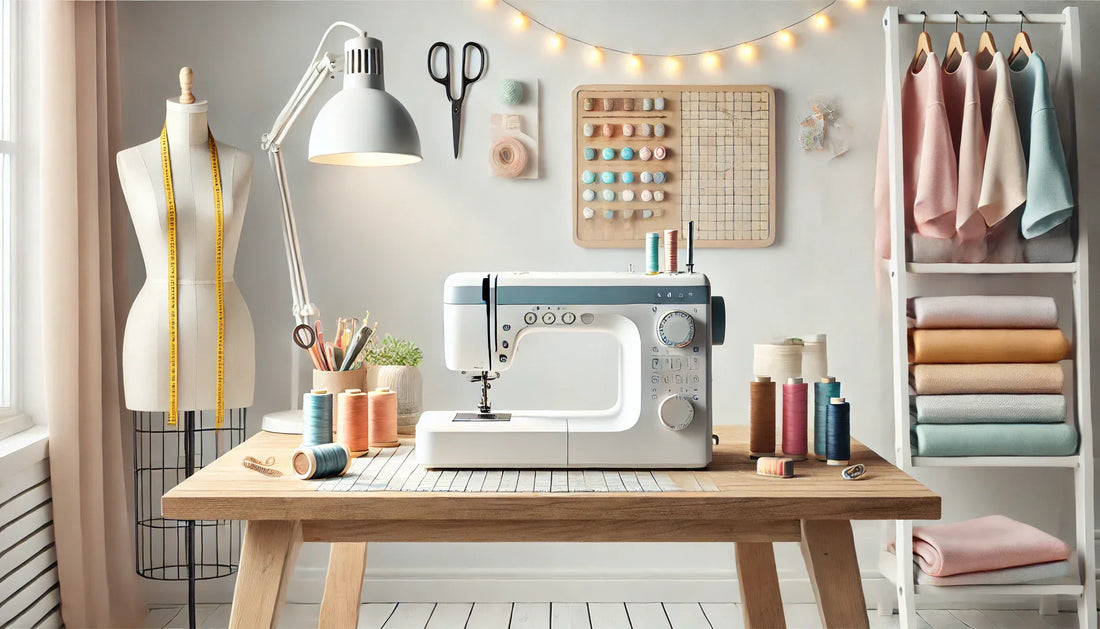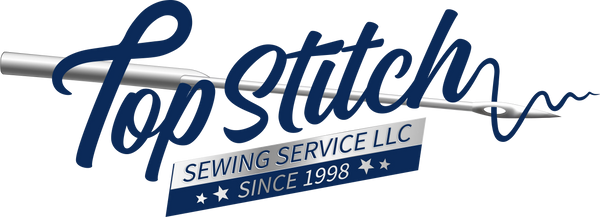
BUYER’s GUIDE TO A SERGER/OVERLOCKER - ESSENTIAL FACTORS TO CONSIDER
If you’re planning on investing in a serger/overlocker sewing machine this guide is to help you through the buying process and help you choose the right machine for your specific needs.
So if you’re a beginner let’s begin with understanding what a serger is,
It's a specialized machine that trims, stitches, and finishes fabric edges in one step creating strong, stretchy, and professional-looking seams, making it an excellent complement to a standard sewing machine.
What Can a Serger Do?
Mainly a serger is good at finishing seams professionally as it creates strong, clean, and polished edges like store-bought clothes. Unlike a sewing machine, a serger cuts excess fabric as it sews simultaneously at a speed of upto 1,700 stitches per minute, making projects faster and can also create rolled hems, flatlock seams, lace piecing, and fabric gathering for decorative and functional finishes.
But there’s more to a serger machine -
- Overlock stitches secure raw edges, preventing the fabric from fraying.
- Ideal for making garments with strong, flexible seams like leggings, swimsuits, workout gear, home décor, and accessories with clean, finished edges.
- Handles lightweight chiffons, stretchy knits, thick denim, and plush fabrics like minky with ease.
- Creates beautiful ruffles and gathers while finishing the edges at the same time.
- Ideal for hemming chiffon, satin, and tulle, giving a polished look.
- Easily sews materials with different textures and stretch properties together.
- Sews through multiple fabric layers without difficulty.
- Great for waistbands, cuffs, and T-shirt necklines while maintaining stretch.
The real question is -
Do You REALLY Need a Serger?
The short answer: It depends on your sewing needs!
A serger (also known as an overlocker) is a powerful machine that trims fabric edges, stitched seams, and prevents fraying—all in one step. But do you absolutely need one? Let’s break it down.
✅ Common Myths About Sergers
🚫 "A serger replaces a sewing machine." → Nope! It’s an addition to your sewing setup, not a replacement. A serger can’t insert zippers, sew buttonholes, or handle certain finishing details.
🚫 "Threading a serger is impossible!" → Not true! Newer models have colour-coded guides and manuals to make threading easier.
So, Do You Need One?
🔹 YES, if...
- You sew frequently and want faster, more professional finishes.
- You work with knit fabrics like jersey or spandex.
- You’re making clothing to sell and want a polished look.
🔹 MAYBE NOT, if...
- You sew only occasionally.
- Your sewing machine’s zigzag stitch is enough for your projects.
- You don’t mind taking extra steps for seam finishing.
Final Verdict
A serger isn’t required, but it’s becomes an essential if you sew a lot. If you're ready to speed up your sewing and achieve professional-quality seams, a serger could be your new best friend!
So now if you’ve decided to buy one let’s discuss
WHAT TO CONSIDER BEFORE BUYING ONE?
-
Some features that are absolutely non-negotiable in a serger are -
- Adjustable differential feed - so that you can control the speed of the upper and lower feed dogs which gives you control over fabric tension and you can sew knits, woven or sheer fabrics without puckering as the dogs evenly feed the fabric using this mechanism.
- The number of thread options, for beginner 3 or 4-thread sergers would be perfect and advanced sewists or professionals should go for the 4- 8 threads option.
- Adjustable Stitch length and width
- Color-coded thread paths and guides as threading a serger can be confusing so color coding simplifies it.
- Adjustable foot pressure so that you can sew any fabric you want, from heavyweight to light fabrics.
- The retractable built-in knife if you’re flatlock or decorative stitching
- Rolled hem option which you’ll easily find in most machines, basic models might not have it, but it's necessary for making narrow, clean hems
FEATURES YOU CAN LIVE WITHOUT -
- Coverstitch conversions
- Pneumatic threading
- LCD Screens
- Storage option
- Flatbed conversion
SERGER Buying Tips -
Try the machine using all types of fabrics from lightweight cotton, and satin to heavy-duty materials like upholstery fabric or denim by serging different fabrics together.
If your budget is above $1000 go for a machine with an air threading feature that makes threading easier and faster by using air to push the thread through the machine, and if you’re buying one with air threading ensure it has tubular loopers to prevent threads from getting tangled up.
If you can’t buy a new one, go for a refurbished serger from a reputed brand like Bernina , Janome or Brother.
FAQs
Can I use a serger thread for regular sewing?
Serger thread is made of two twisted strands, making it finer and thinner than all-purpose thread. While it can be used for regular sewing, it doesn’t provide as strong a seam as standard sewing thread.
What is the difference between a cover stitch machine and a serger?
A serger’s main job is to clean up fabric edges and prevent fraying, while a cover stitch is primarily used for hemming, especially on stretchy, athletic clothing like leggings, yoga pants, and t-shirts. If you look up cover stitch hems, you’ll recognize the double-row stitching commonly seen on these garments. That said, a cover stitch machine is more of a luxury than a necessity for most home sewers, as a regular sewing machine with a twin needle can often do the job well enough.
Are Convertible Serger and Coverstitch Machines Worth It?
Yes, these machines are more cost effective than buying separate machines however there are potential performance limitations since some users have reported that convertible machines arent fast enough in threading and tension control as dedicated coverstitch models. So if you want to save space and money its a great investment but if you want top performance it might not be the best choice
